As the alcohol industry constantly changes with shifting trends and consumer preferences, alcohol brands are gearing up to redefine their packaging and design. Whether it involves embracing sustainability, celebrating authenticity, or integrating digital innovation, the current state of alcohol packaging tells us that the industry is always about moving forward. And with growing competition in the alcohol industry and fewer chances to grow, standing out is a must.
Packaging is like a sneak peek of what’s inside the bottle – it’s a way for brands to show off their identity. But it isn’t easy: as trends evolve, alcohol brands are challenged to stand out and create unique packaging that will resonate with their customers and their values.
Here’s some inspiration to help you adapt and stand out:
Smart Technology in Alcohol Packaging
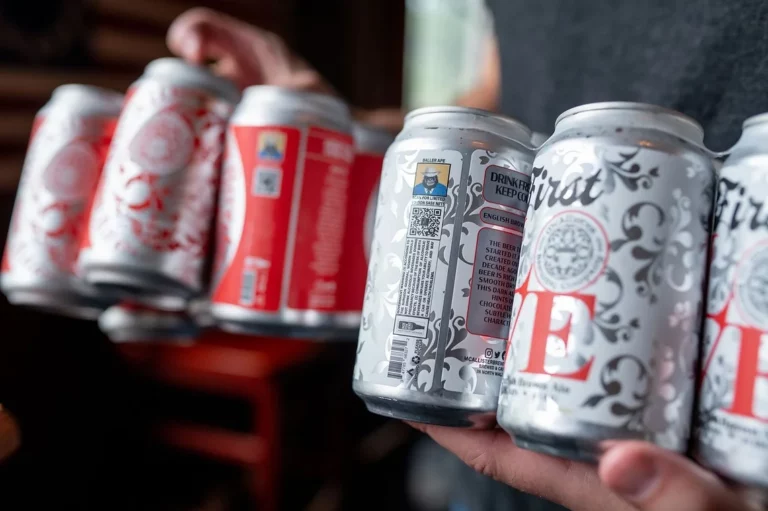
McAllister Brewing Company uses QR codes to connect with customers across channels and provide important information. In today’s world, customers are more curious than ever. They want to know where their drinks come from, what the brand stands for, and every little detail in between. This minimalist approach gives QR codes the opportunity to shine, offering a fun, yet practical way to access product information.
Learn more about McAllister Brewing Company +
Alcohol brands can add QR codes to their packaging to share information like nutritional value, brand story, ecological footprint, etc. When brands take customers on this interactive journey, they can drive an omnichannel approach to connect with them across channels and provide deeper value than the packaging can at face value.
Augmented reality not only provides an engaging experience for customers but a chance for alcohol brands to market their brand story and history. Augmented reality brings to life multimedia content and immersive experiences that go above and beyond the average product label, allowing consumers to interact with the product through their website, phone camera, etc. It transforms the act of purchasing and drinking alcohol when customers are able to use their phones to engage with the product and alcohol brand. When alcohol brands incorporate AR into their products, it gives customers an opportunity to learn about the product and increase their satisfaction post-purchase.
Check out how 19 Crimes wine incorporates augmented reality within their wine label design in our eBook, “Trends in Print and Packaging.”
Personalization in Alcohol Packaging
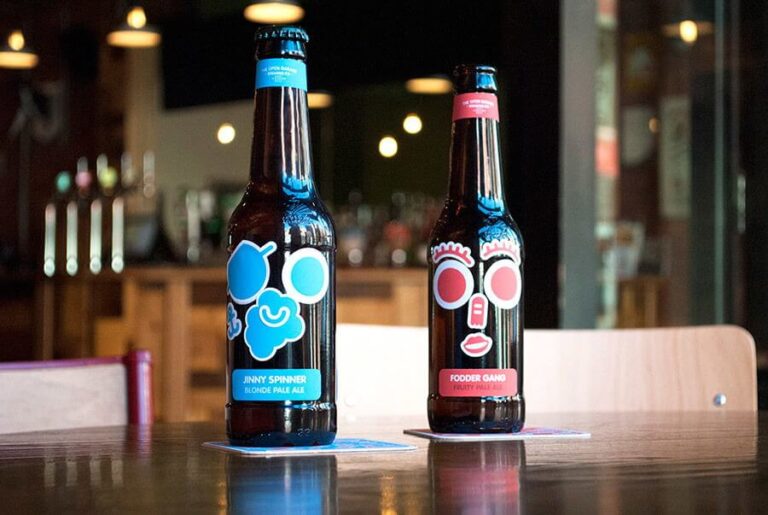
Open Garage Brewing Company provides their customers with a unique drinking experience by allowing them to personalize their own beer bottle. They handed their customers bare brown bottles with a sticker sheet, encouraging them to customize their bottles. The experience transformed the bottle into more than just a drink – it was an engaging and interactive time where customers were able to express their individuality and creativity.
Learn more about Open Garage Brewing Company here +
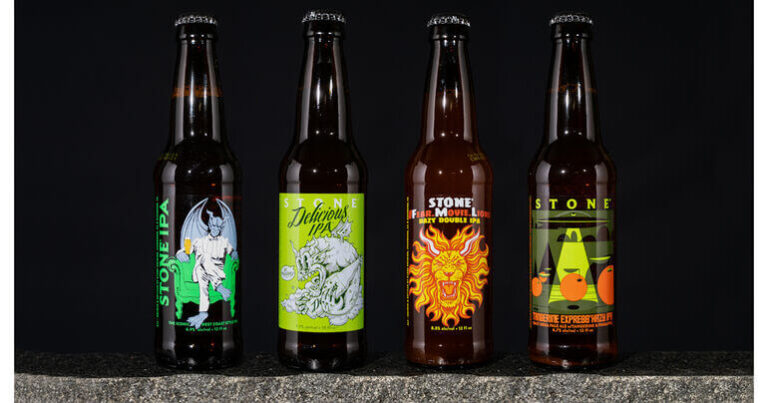
When you’re mass producing something like beer, it can be difficult to tailor the experience to the customer. Personalization has become an important asset in identifying preferences for customers. Customers want to be able to resonate and identify with the product that they are purchasing. It makes the drinking experience more thoughtful and special when they can add their own personal touch to the moment. Alcohol brands that integrate personalization into their packaging have the opportunity to engage with their customers emotionally, fostering a sense of value and connection. Stone Brewing Company in Escondido, California collaborated with local guest artists and released a mixed pack featuring custom artwork on their beer labels. When alcohol brands partner with local artists or designers, it resonates with customers more because they want to support local and build a stronger sense of community.
Learn more about Stone Brewing Company +
Alcohol brands are doing more than just showcasing the art – they’re showing they care about their community. And when customers notice that authenticity, it makes them more inclined to purchase the beer case pack, not just for the beer, but for the sense of belonging and connection it represents as well.
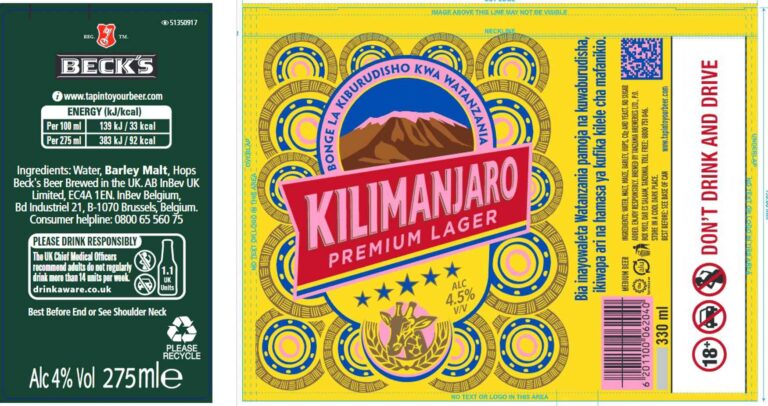
AB InBev, a Belgian brewery company, distinguishes themselves by providing valuable content about their products through their beer bottle labels. Alcohol brands offer important details on their labels like nutritional facts and ingredients, responsible drinking reminders, and even safety precautions.
In today’s world, customers are more concerned than ever about what goes into their drinks and what they’re putting into their bodies compared to a few decades ago. Transparency means a lot to customers, especially when it comes to the food and beverage products they are consuming. We are in an age where customers expect for all the information to be readily available to them.Alcohol labels with relevant information offer an opportunity for alcohol brands to not only provide actionable advice but promote the brand’s message and goals. With informative labeling, consumers are aware of what they are consuming while building a stronger connection with the brand.
Sustainability in Alcohol Packaging
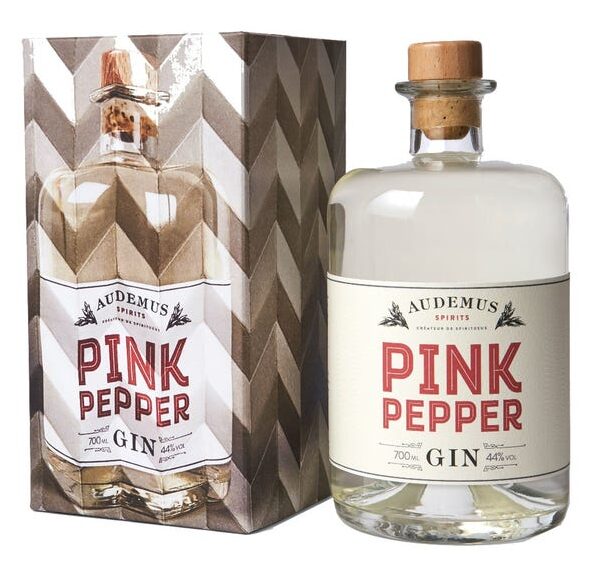
Audemus Pink Pepper Gin & Gift Box has differentiated themselves by making their alcohol gift box entirely of sustainable sourced materials including vegetable inks. 71% of consumers have chosen a product in the last six months based on its sustainability credentials. With sustainability being a top choice for customers’ preferences when making purchases, the alcohol industry is no exception.
Because of this, alcohol brands have shifted their packaging strategies and materials to prioritize an eco-friendly model. When brands adopt sustainable practices, customers feel a moral alignment, establishing lasting connection and loyalty.
Learn more about Audemus Spirits +
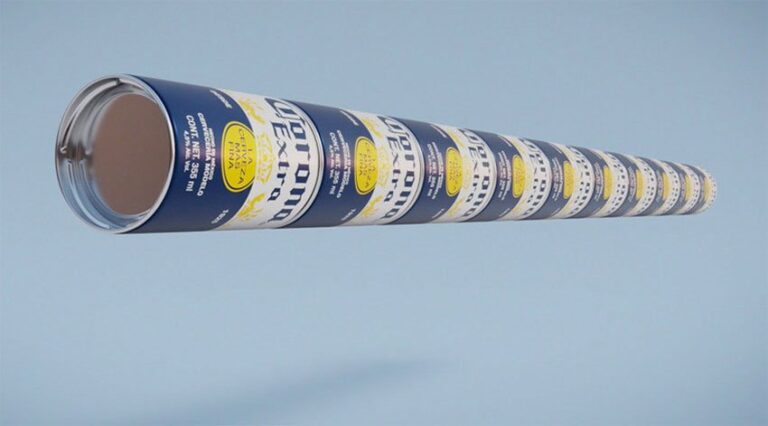
With a mission to contribute towards a more sustainable planet, Corona aims to reduce plastic in their packaging. Corona’s new stackable beer can labels twist together to avoid using plastic rings to fasten cans together. This innovative design offers convenience and sustainability in packaging that aligns with both customer and planet-friendly values.
Learn more about Corona here +
Visual Appeal in Alcohol Packaging
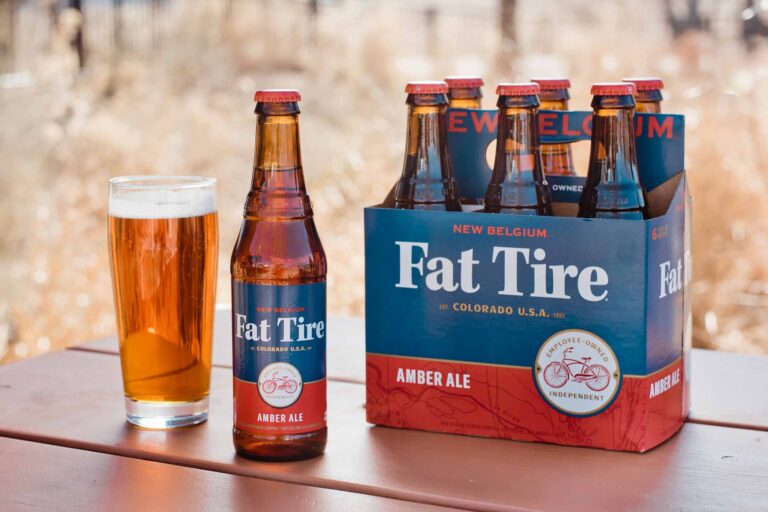
Fat Tire Ale, a New Belgium brewing company, refreshed their brand with a sleek beer case and label design after 32 years. They provide a timeless packaging design with easy-to-read fonts and simple colors, showing that less is more.
In a world full of flash, designs like Fat Tire Ale’s stand out because they don’t overwhelm you. Customers want to purchase products that are easy on the eyes with straightforward messaging and branding. In an age of information overload, minimalist packaging offers relief from overwhelming visuals and text.
Learn more about Fat Tire Ale +
Seasonality in Alcohol Packaging
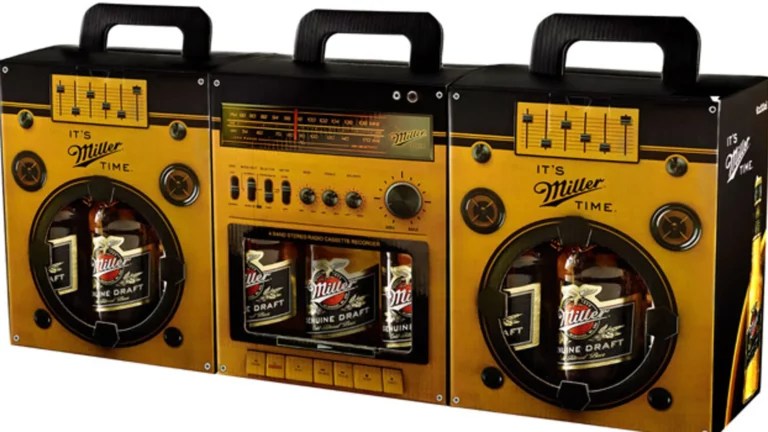
In the age where vintage and retro aesthetics are stronger than ever (maybe even stronger than when they first came around), Miller Lite released its limited packaging of beer cases in the form of a boom box to spark nostalgia with its audience.
Nostalgia marketing allows brands to tap into emotions and memories associated with the customers’ past. This beer case isn’t just a stylish design, it provides a sense of nostalgia that resonates with Generation X customers. 61% of Miller Lite drinkers are 40+ years old, a demographic that recalls the era of boomboxes in the late 1970s. Drinking Miller Lite from this stylized packaging takes them back to their younger days – maybe even their earliest days drinking Miller Lite, in some cases – to develop warm and personal brand associations.
Learn more about Miller Lite +

Graham + Fisk’s Wine-in-a-can has packaging in a “summer bubbles box” that is perfect for on-the-go summer activities. The bright colors match the summer season and help create a sense of novelty and timeliness for customers.
In the winter, wine by the bottle is convenient because customers are indoors doing more activities at home like hosting friends or celebrating holidays. But in the warmer months, people prefer to hang outside or take drinks to-go with increased travel and spending time near water.
Learn more about Graham + Fisk +
Beverages like Graham + Fisks’ are mobile, single serving, and easy to cart around during this season. When alcohol creates packaging with the changing seasons to meet customer preferences and activities, it allows customers to seamlessly integrate into those moments, resulting in greater satisfaction and loyalty towards the brand.
Packaging should transcend its utility – it’s the canvas brands use to paint their story, a tactile invitation to explore their world. It serves both emotional and practical benefits as an integral customer touchpoint, and shows customers who they are as a brand, what they value, and what they bring to the table.Alcohol packaging serves as the first impression that people get with your brand in a market that’s super commoditized and hard to break into. Brands that continuously evolve their packaging strategy understand that their packaging is a fundamental component of their brand identity.
Just like how trends change and customers grow, packaging strategies need to keep up as well. So, how do you stand out and catch your customers’ attention?





